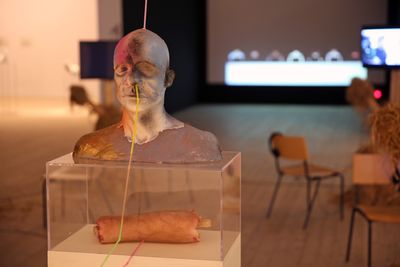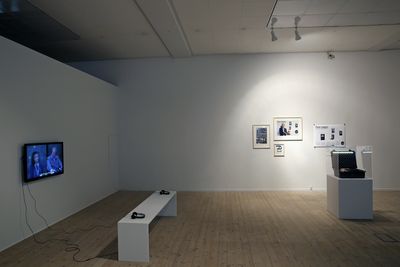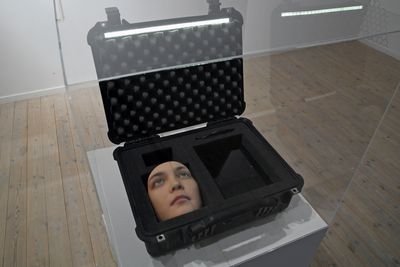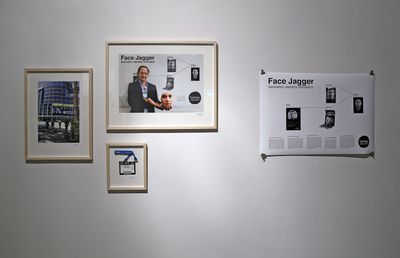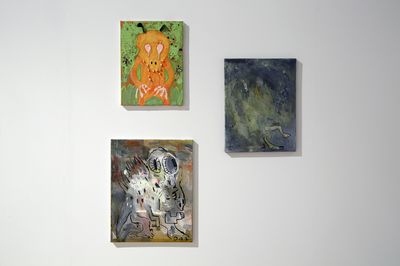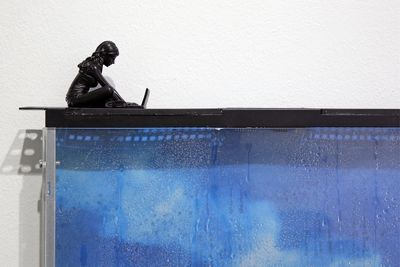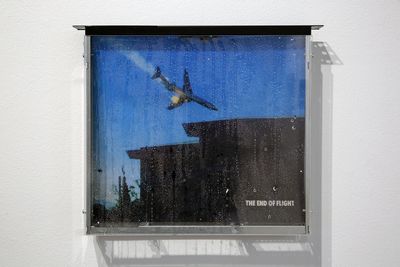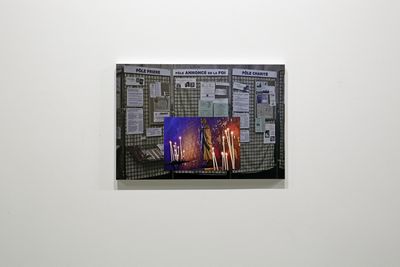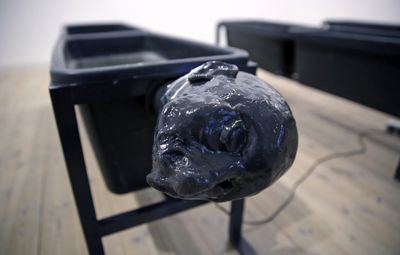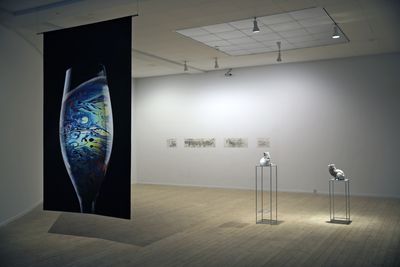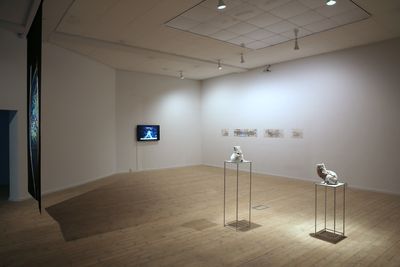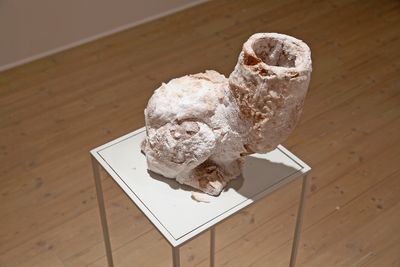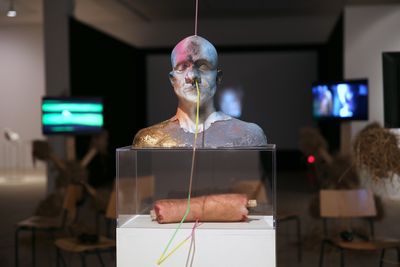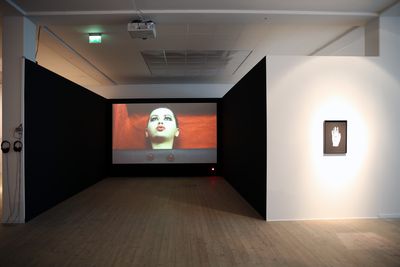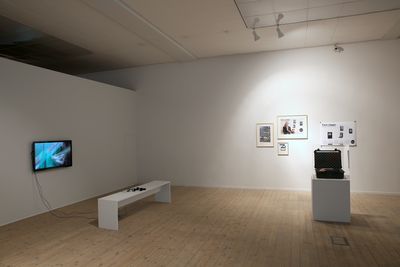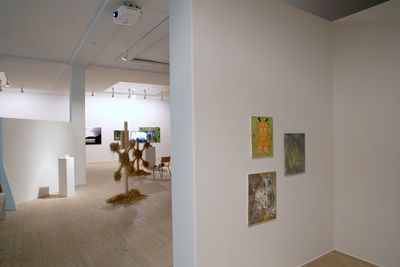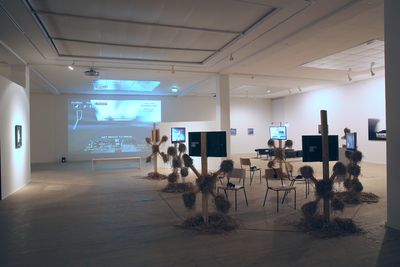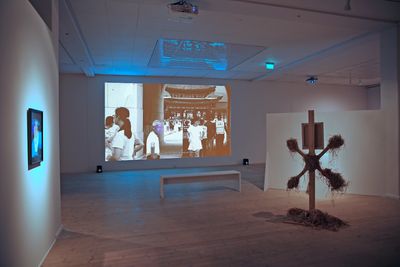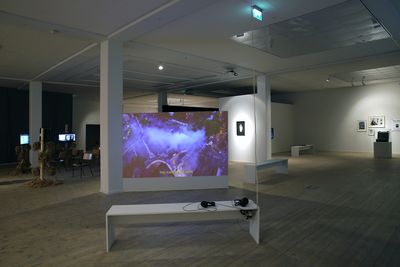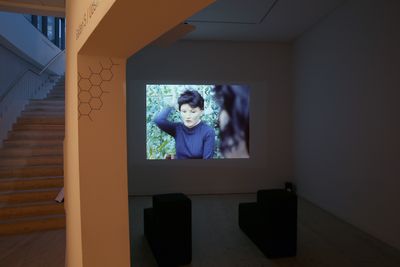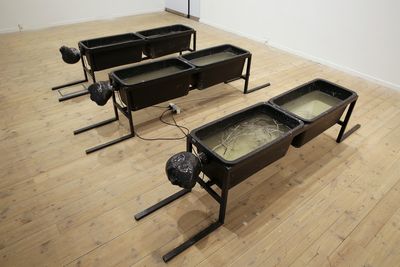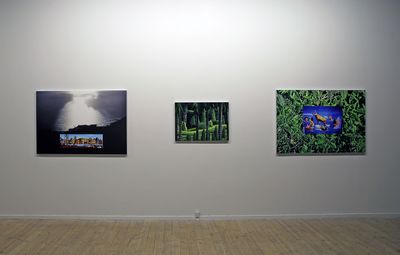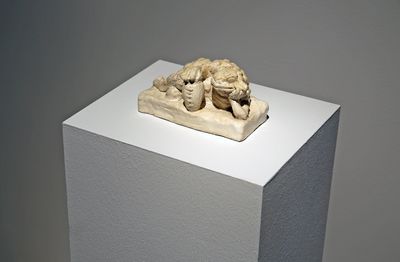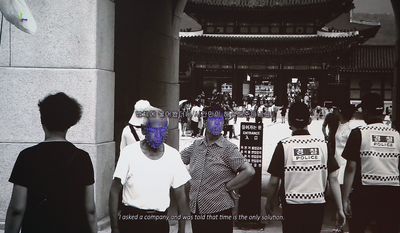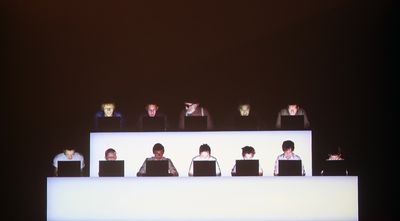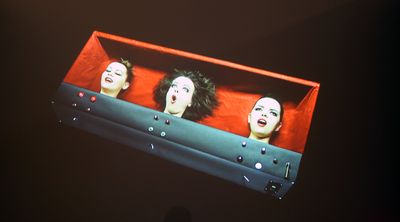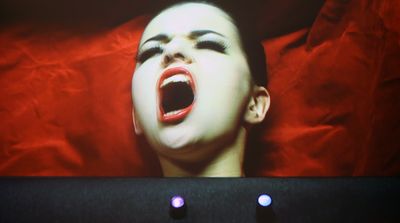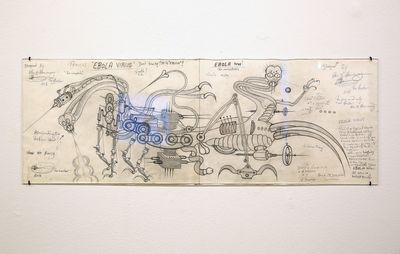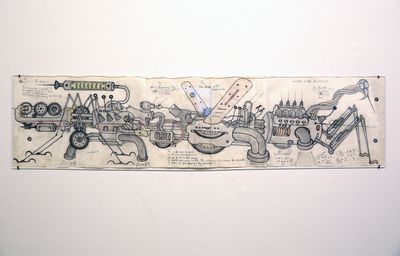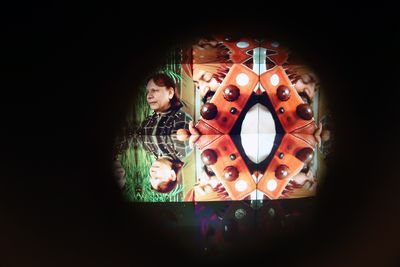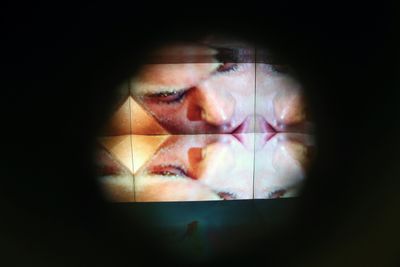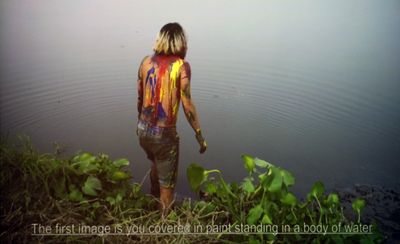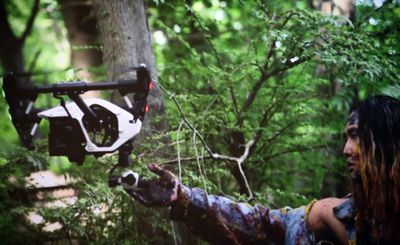Iwillmedievalfutureyou5
–
–
The cryptic title iwillmedievalfutureyou5 dissolves time by pointing back and ahead at the same time. ‘I will' is an action that points ahead, describing or predicting something that is about to happen – such as "I will kill you" or "I will love you forever". 'Medieval' points back, referring to the Middle Ages from around 1000 to the 1400s, while 'future' points ahead to a non-defined, possibly endless future. ’You’ refers to one or more persons.
The sentence iwillmedievalfutureyou5 can be read as a kind of vendetta, revenge or a declaration of love (depending on how you view the Middle Ages and/or the future) aimed at a person, a place, a society or a global state of affairs. Time is a transformer that looks back as well as ahead.
How can the future be linked to the past? The writer and former bishop Jan Lindhardt wrote a book, Frem mod middelalderen (Towards the Middle Ages), which describes how TV and, more recently, the Internet, smartphones and other electronic media have recreated the communal spaces of the Middle Ages – shared spaces where no-one can hide, a contrast to the era of written culture which gave each of us a private space of our own. The times are constantly changing – all the time. The future is often several ‘futures’ at once because it takes place on several different levels simultaneously. The futurist Alvin Toffler, author of the seminal books Future Shock and The Third Wave, describes the future like this: "The future always comes too fast and in the wrong order."
The artists depict absurd and dystopian portrayals of our current era, and through these works the exhibition will seek to reflect the primitive aspects of our present day and our potential future. The works depict journeys through time and place, back and forward. The exhibition can be seen as an epic tale of the future, showing our dreams and our fantasies, their meltdowns and their merging.
The exhibition is accompanied by a publication including essays by Grégoire Chamayou, Michel Houellebecq, Nathalie Quintane, Mark von Schlegell and Roman V. Yampolskiy.
Supported by the Danish Arts Council, Aarhus Municipality, The Obel Family Foundation and Knud Højgaards Fond.
